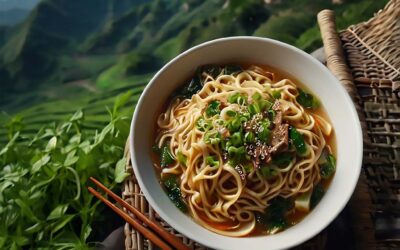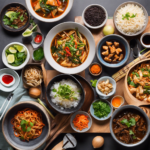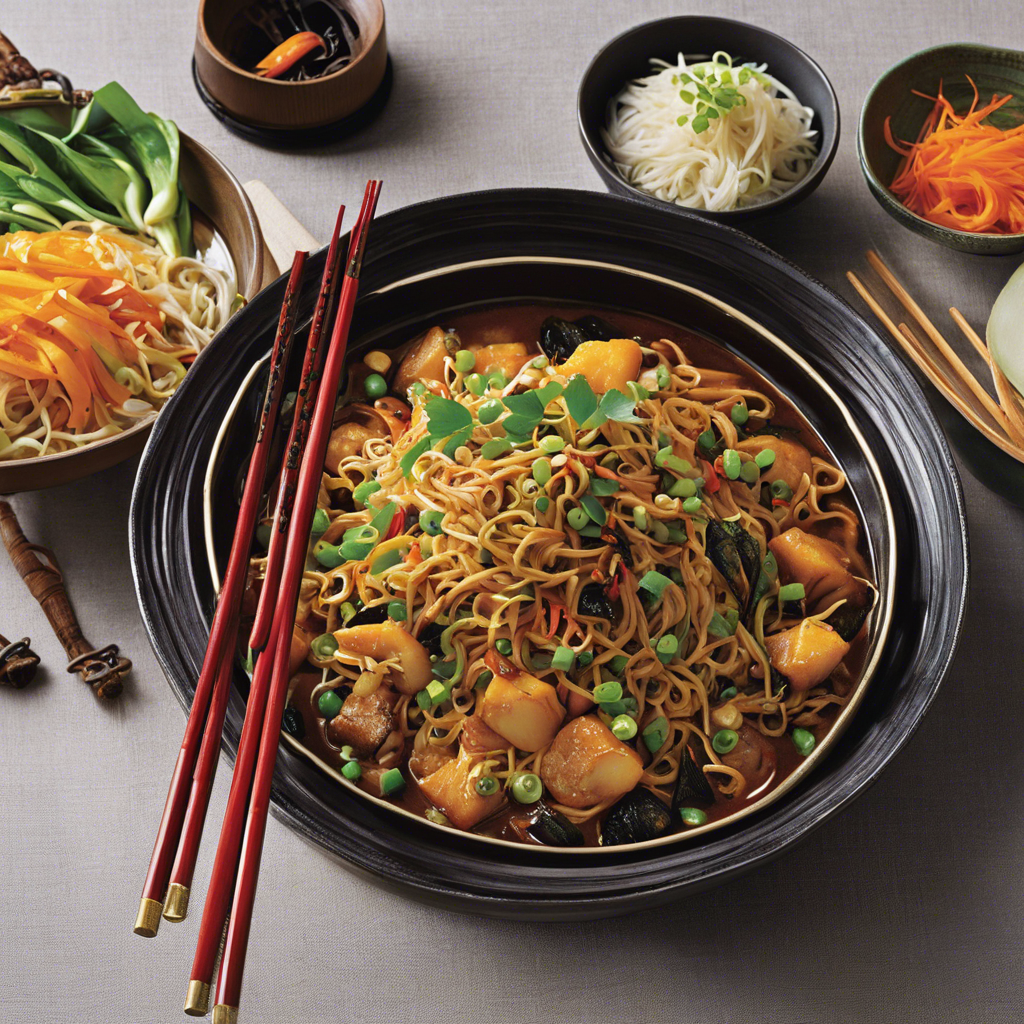1. Introduction to Asian Noodles
Asian noodles are a staple in many cuisines, offering a wide range of textures and flavors. From the chewy ramen of Japan to the silky pho of Vietnam, noodles are a beloved part of Asian culinary tradition. Making your own noodles at home can seem daunting, but with the right techniques and ingredients, you can create delicious noodles that rival any restaurant. This guide will walk you through the process, step by step, ensuring you achieve perfect noodles every time.
2. Understanding the Basics of Noodle Making
Noodle making is an ancient art that requires precision and patience. The basic ingredients for most Asian noodles include flour, water, and sometimes eggs. The type of flour you use can significantly affect the texture of your noodles. For example, wheat flour is commonly used for ramen and udon, while rice flour is used for pho. Understanding these basics will set the foundation for your noodle-making journey.
3. Choosing the Right Flour
Different noodles require different types of flour. For wheat-based noodles like ramen and udon, high-gluten flour is ideal as it gives the noodles their characteristic chewiness. For rice noodles, you’ll need rice flour, which provides a delicate, silky texture. Experimenting with different flours and ratios can help you find the perfect texture for your homemade noodles.
4. The Importance of Kneading
Kneading is a crucial step in noodle making, as it develops the gluten in the dough, giving the noodles their structure and chewiness. Knead the dough until it becomes smooth and elastic, which can take about 10-15 minutes by hand. This step is essential for achieving the right texture, so don’t rush it.
5. Resting the Dough
After kneading, the dough needs to rest to allow the gluten to relax. This makes the dough easier to roll out and prevents it from shrinking back. Wrap the dough in plastic wrap and let it rest for at least 30 minutes at room temperature. For even better results, you can let it rest in the refrigerator for a few hours or overnight.
6. Rolling and Cutting the Dough
Once the dough has rested, it’s time to roll it out. Dust your work surface with flour to prevent sticking, and use a rolling pin to roll the dough to your desired thickness. For ramen, the dough should be thin, while udon noodles are thicker. After rolling, use a sharp knife or a pasta cutter to cut the dough into noodles. The width of the noodles can vary depending on your preference.
7. Cooking Fresh Noodles
Freshly made noodles cook much faster than dried ones. Bring a large pot of water to a boil and add the noodles. Fresh noodles typically cook in 2-3 minutes, so keep an eye on them to avoid overcooking. Once cooked, drain the noodles and rinse them under cold water to stop the cooking process and remove excess starch.
8. Making Ramen Noodles
Ramen noodles are known for their springy, chewy texture. To achieve this, you need to add an alkaline component to the dough, such as kansui (alkaline water) or baking soda. This ingredient gives ramen noodles their distinctive yellow color and firm texture. Follow the same process of kneading, resting, rolling, and cutting, but with the addition of the alkaline component.
9. Crafting Udon Noodles
Udon noodles are thick and chewy, perfect for hearty soups and stir-fries. Use high-gluten flour and a higher water ratio to create a soft dough. Knead and rest the dough as usual, then roll it out to a thicker consistency and cut it into wide strips. Udon noodles can be cooked immediately or stored in the refrigerator for later use.
10. Creating Rice Noodles
Rice noodles are a staple in many Southeast Asian dishes. To make them, mix rice flour with water to create a smooth batter. Spread the batter thinly on a flat surface and steam it until it sets. Once cooled, cut the rice sheets into desired shapes. These noodles are perfect for dishes like pad thai or pho.
11. Exploring Egg Noodles
Egg noodles are rich and flavorful, often used in Chinese cuisine. To make them, add eggs to the basic dough mixture. This results in a softer, richer noodle. Knead, rest, roll, and cut the dough as with other noodles. Egg noodles cook quickly and are perfect for soups and stir-fries.
12. Flavoring Your Noodles
While traditional noodles are often plain, you can experiment with adding flavors directly to the dough. Ingredients like spinach puree, beet juice, or squid ink can add color and subtle flavors. Incorporate these ingredients during the mixing stage to ensure even distribution.
13. Storing Homemade Noodles
Homemade noodles can be stored for future use. Dust the noodles lightly with flour to prevent sticking and place them in an airtight container. Fresh noodles can be stored in the refrigerator for up to three days or frozen for longer storage. To use frozen noodles, simply cook them directly from the freezer.
14. Pairing Noodles with Broths and Sauces
The type of broth or sauce you pair with your noodles can elevate the dish. For ramen, a rich pork or miso broth is traditional. Udon noodles pair well with a simple dashi-based broth, while rice noodles can be used in light, fragrant broths like pho. Experimenting with different pairings can lead to delicious discoveries.
15. Noodle Dishes from Around Asia
Asian noodles are incredibly versatile and are featured in a variety of dishes. In Japan, soba noodles are often served cold with a dipping sauce. In China, dan dan noodles are a spicy, savory treat. Thai cuisine features dishes like pad see ew and drunken noodles. Exploring these different dishes can inspire your noodle-making adventures.
16. Troubleshooting Common Issues
Noodle making can sometimes be challenging. If your noodles are too sticky, add more flour during kneading. If they are too dry, add a little more water. Rolling the dough evenly and cutting consistent widths will ensure even cooking. Practice makes perfect, so don’t be discouraged by initial difficulties.
17. Conclusion: The Joy of Homemade Noodles
Making your own Asian noodles at home is a rewarding experience that allows you to create delicious, authentic dishes. With practice, you’ll develop a feel for the dough and the techniques needed to achieve perfect noodles every time. Whether you’re making ramen, udon, or rice noodles, the effort you put into homemade noodles will be evident in the taste and texture of your dishes. Enjoy the process and savor the results!













